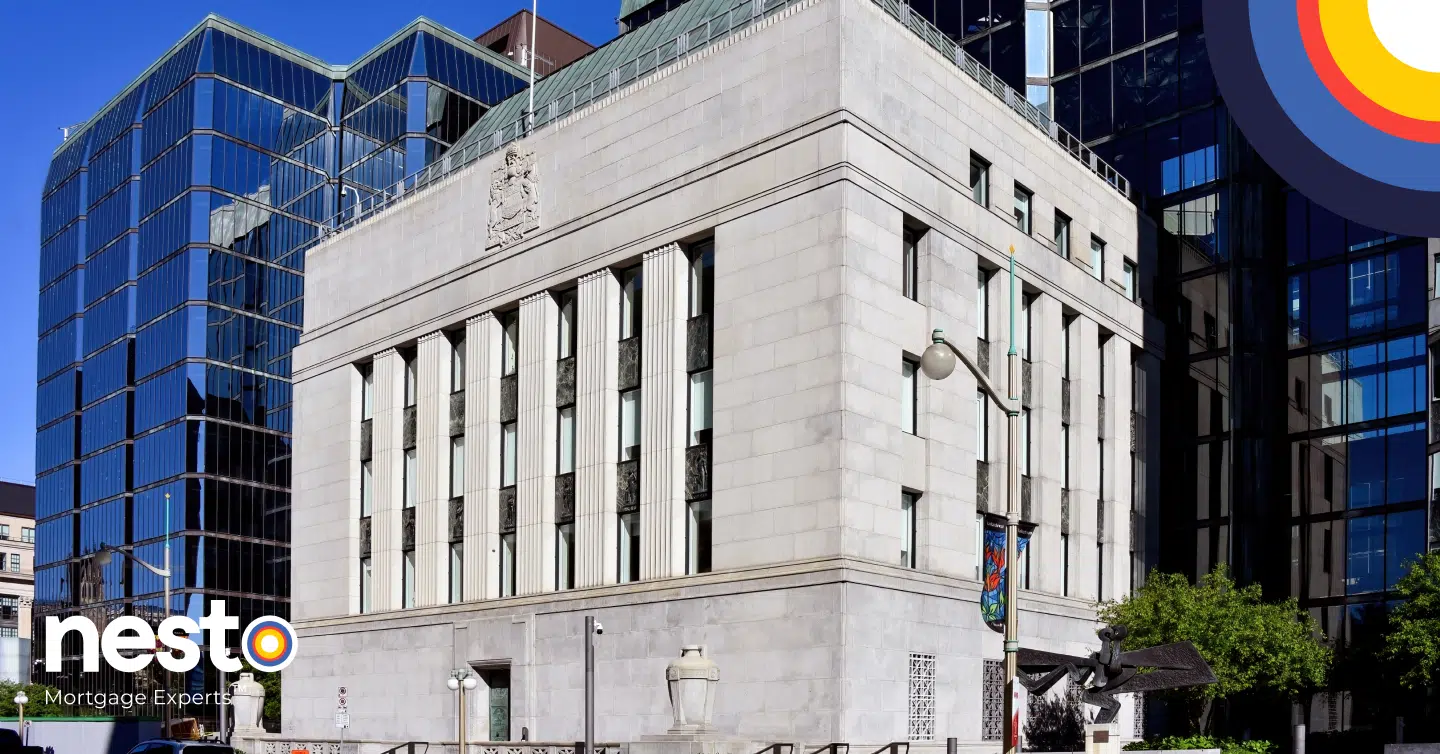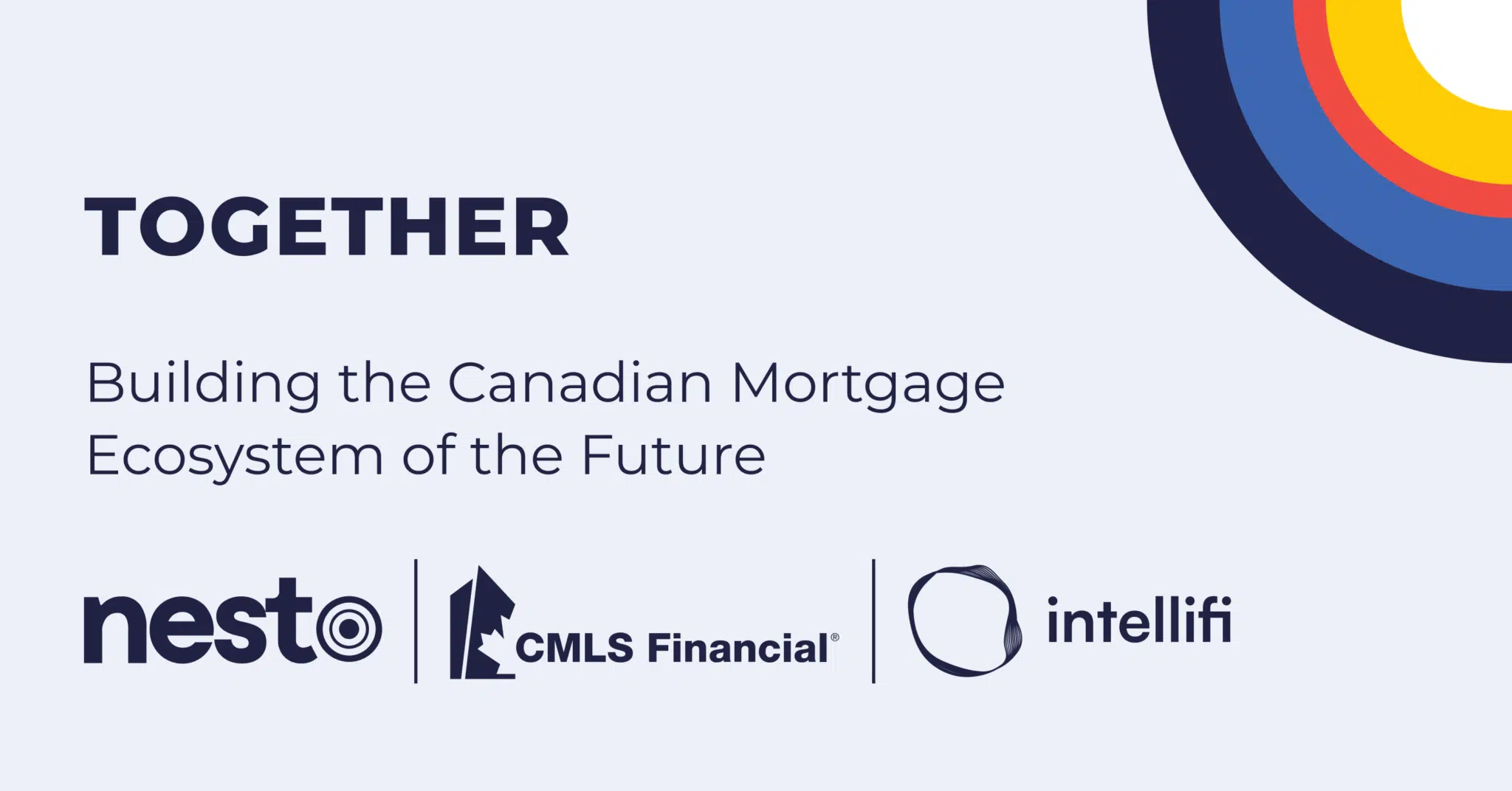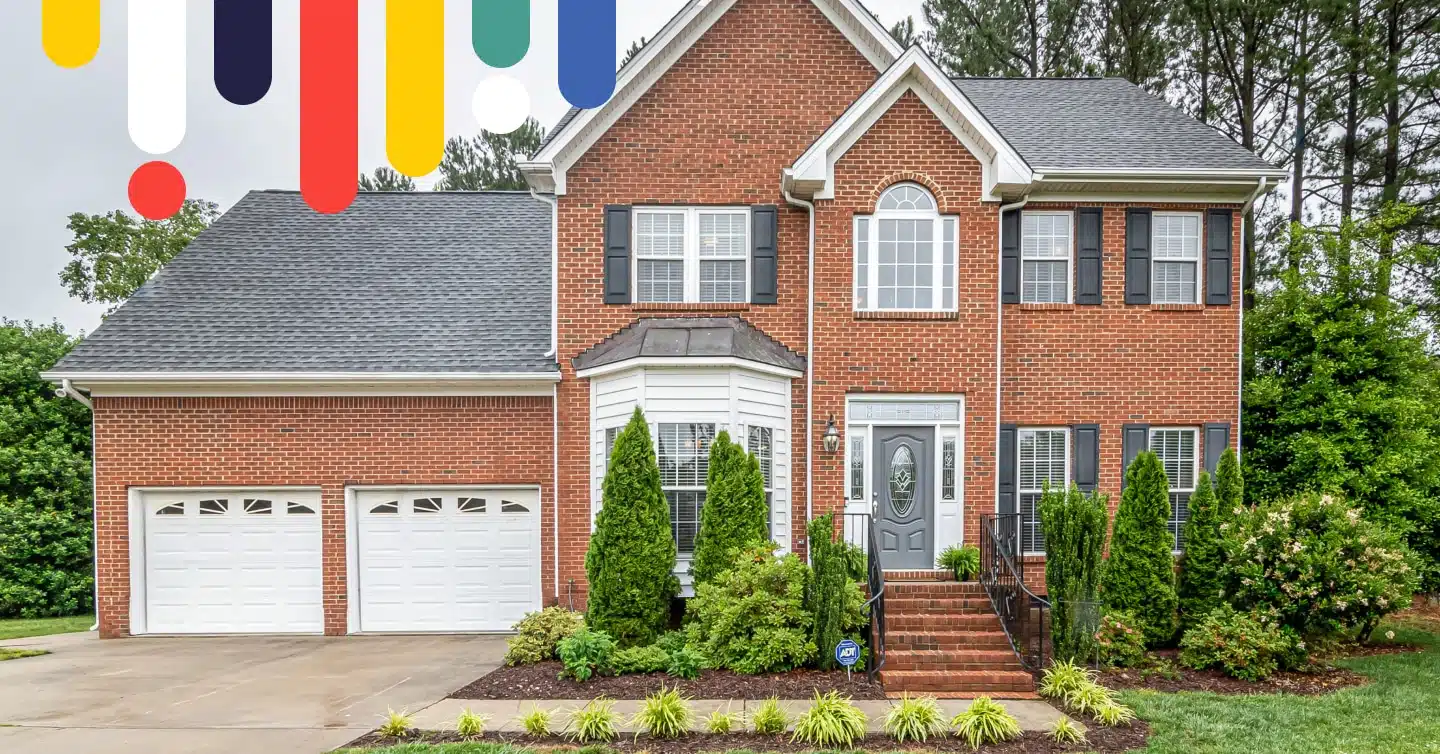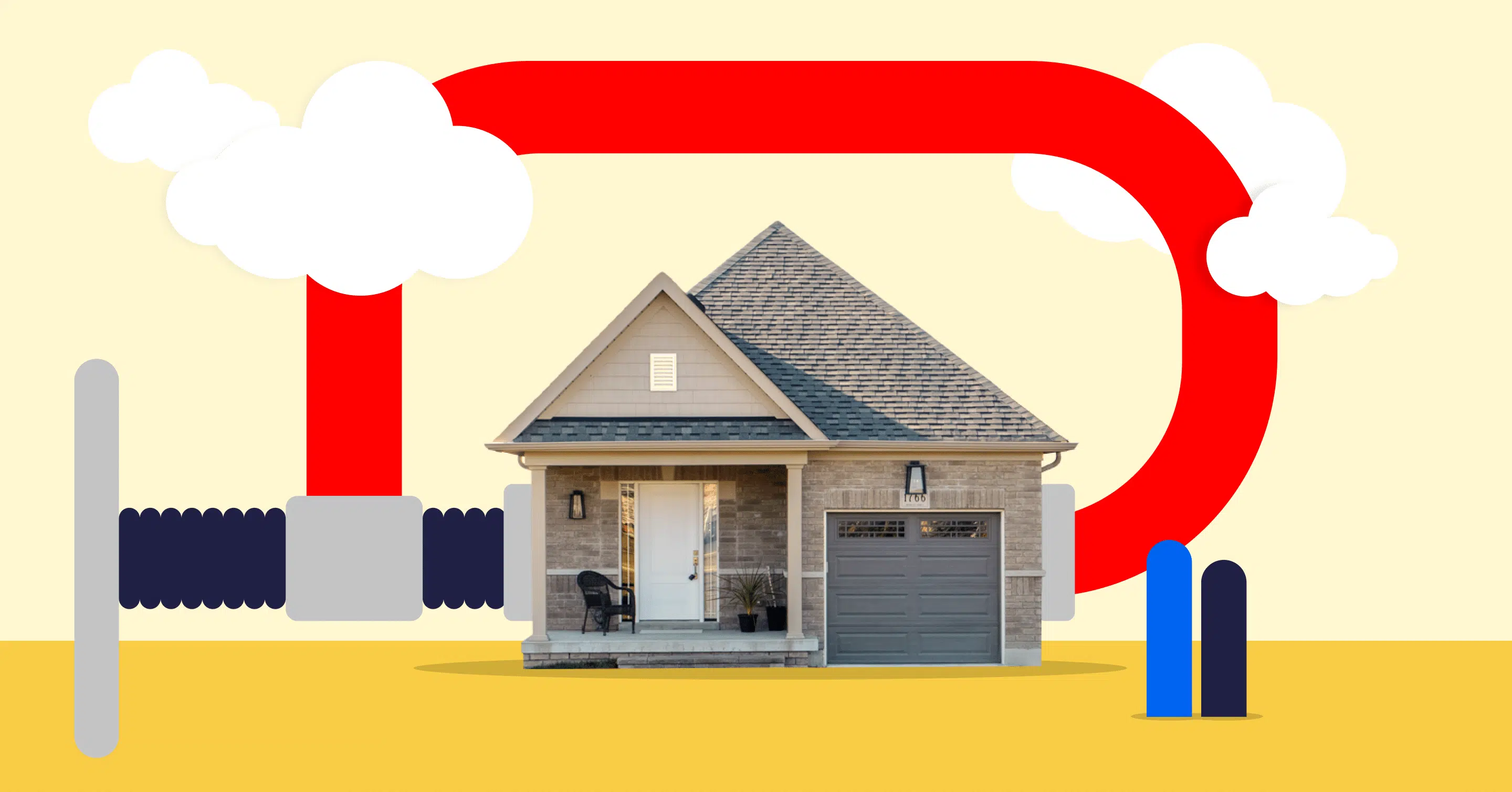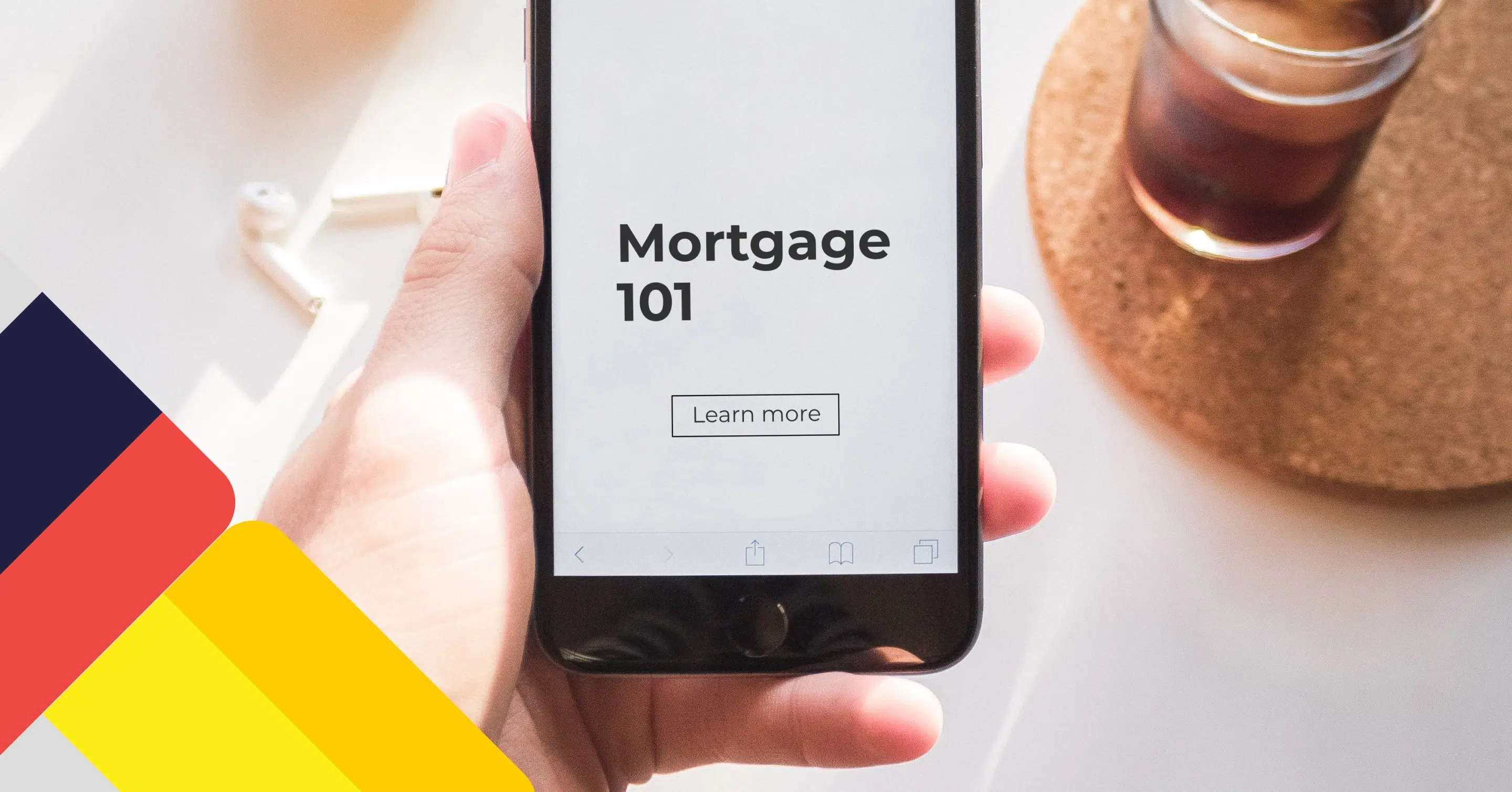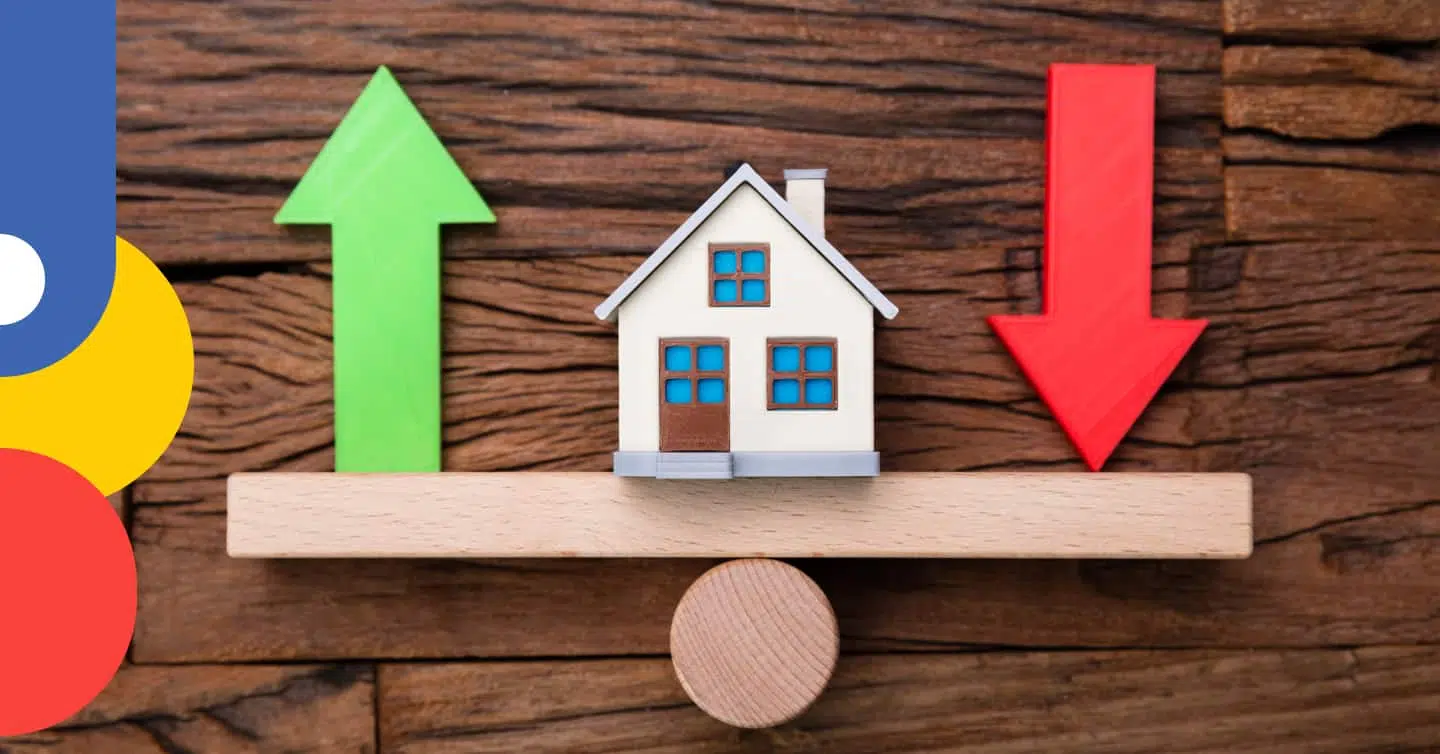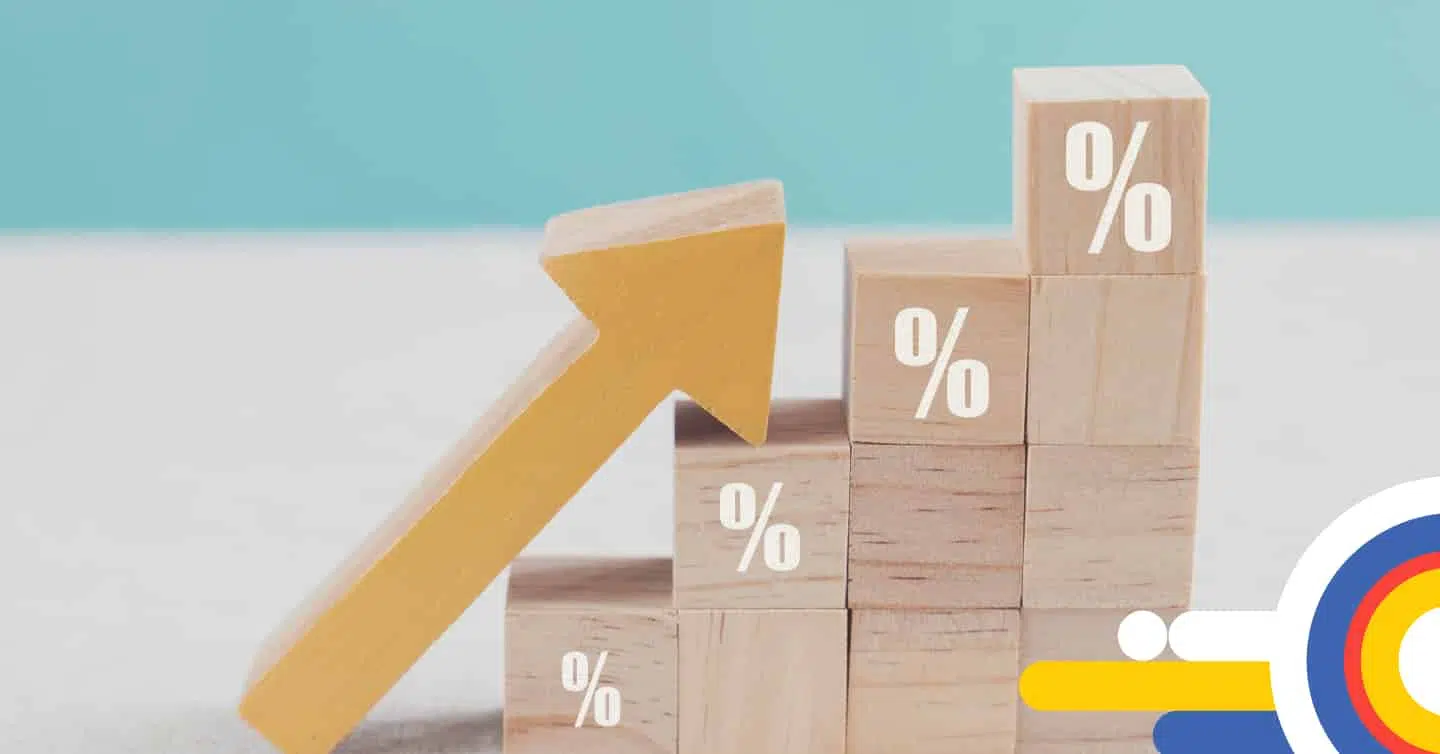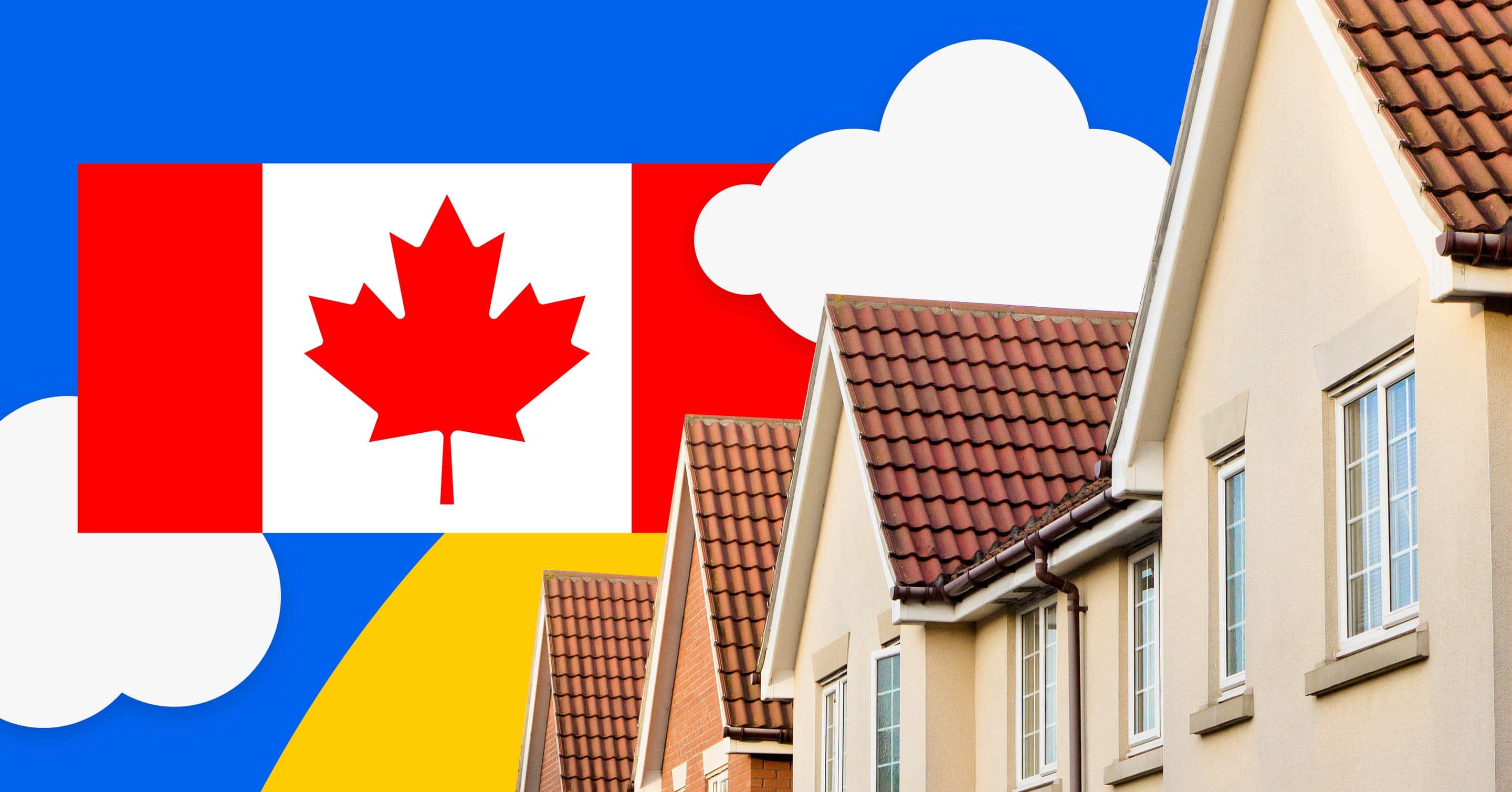Mortgage Basics #Home Buying #Loan Types
Mortgage Basics #Home Buying #Loan Types
What is a Trigger Rate & How Does it Impact Variable Mortgages?
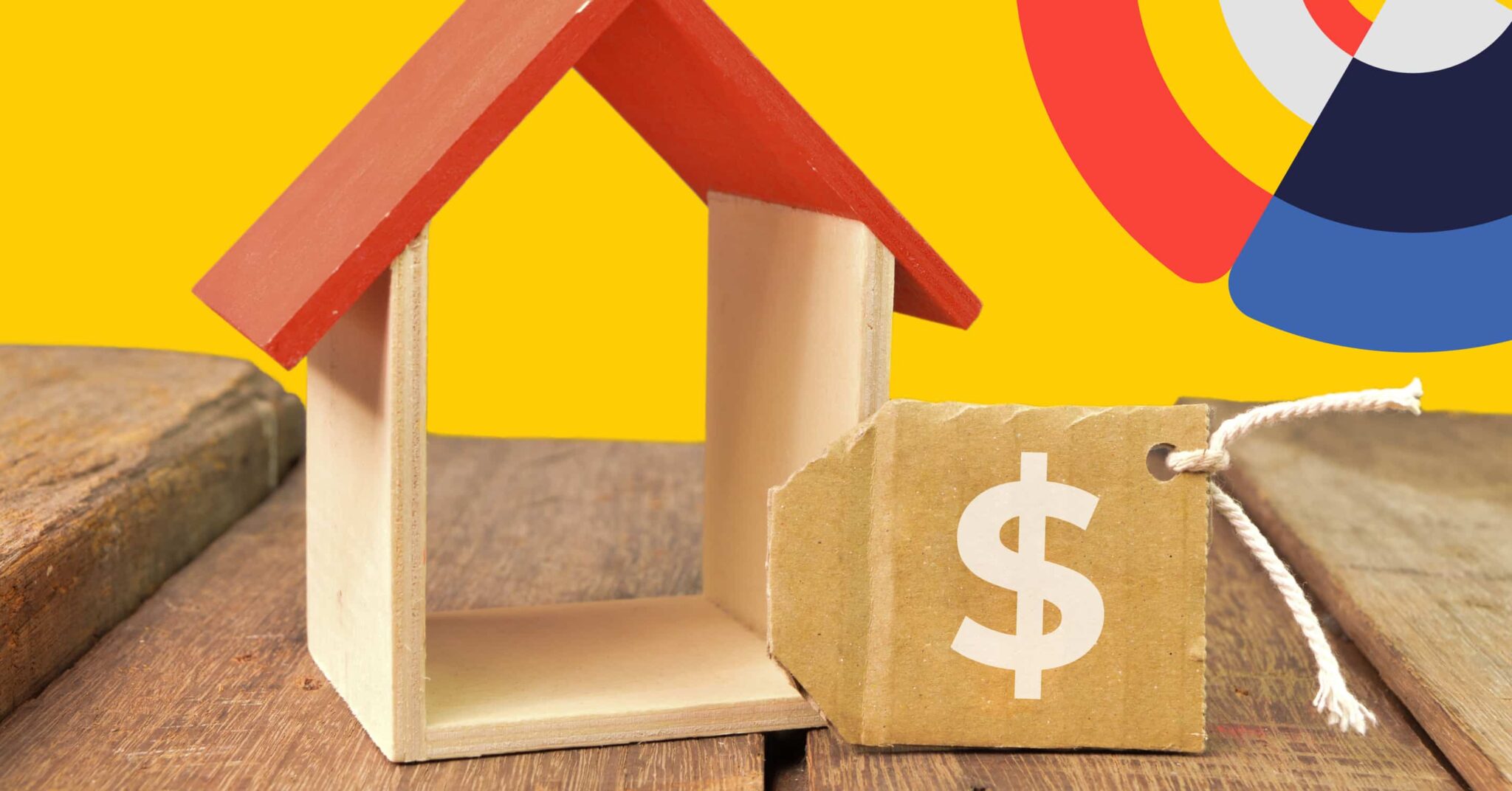
Table of contents
Notice: Effective November 21, 2024, mortgage transfers between lenders will be exempt from requalification. Transactionally insured (those who originally purchased with less than 20% downpayment) and uninsured mortgages (without increasing mortgage balance or amortization) will no longer be required to stress test when changing lenders at maturity. Going forward, only new purchase and refinance mortgage applications must be qualified through the stress test.
Since March 2022, the BoC has been increasing its key policy interest rate, bringing it to 2.75%, the highest it has been since 2001. This, in turn, brought most lenders’ prime lending rate, which all prime variable mortgages are priced against in the country, to 4.95%.
Many homeowners wonder how these changes affect their variable mortgages as more mortgages reach their trigger rates and trigger points. We’re here to clear up any anxiety based on misconceptions. In this blog post, we’ll go over what a trigger rate is, how to calculate your trigger rate and the various scenarios you may find yourself in with a VRM. Read on and learn more!
Key Takeaways
- The trigger rate is reached when your mortgage principal balance is no longer paid.
- The trigger point is reached when the balance owing on the mortgage is greater than the original mortgage amount.
- Variable-rate mortgages (VRM) with fixed payments are the only type of mortgage that can hit their trigger rates and trigger points.
What Is A Trigger Rate On A Mortgage?
The trigger rate is where your mortgage payments no longer cover any principal portion, only the interest, of your mortgage payment. This results in an increasing rate environment where a higher interest rate is required on the variable-rate mortgage without increasing the mortgage payment.
In the beginning of an increasing interest rate environment, none or very little principal is being paid, only the interest and, in some cases, not enough interest is being paid. For a variable mortgage to reach its trigger point, only the interest is being paid and no principal, causing your amortization to increase instead of decrease (called negative amortization) with each mortgage payment. To get to your trigger point, only the interest would have been paid down while interest rates increased.
Not all mortgage holders need to worry, as adjustable-rate and fixed-rate mortgage holders are unaffected.
How To Calculate Your Trigger Rate?
The quickest way to calculate your trigger rate is to review your mortgage documents and the initial contract or commitment you signed with your lender. The trigger rate outlined in your documents implies that you have not made any prepayments during your term, as prepayments made to your mortgage will increase your trigger rate.
The formula to calculate your trigger rate requires you to find your payment amount, the number of payments per year (payment frequency), and the current balance owed.
Payment amount X number of payments per year/balance owing X 100 = Trigger rate in %.
- So if your payment is $1,194 biweekly and you owe $580K, then your trigger rate will be 5.35%, calculated as
- $1,194 per payment x 26 biweekly payments per year / $580,000 balance x 100 = 5.35%
What Is A Trigger Point?
The borrower does not need to take any action when their mortgage hits the trigger rate; however, some action is required when it hits the trigger point.
When you’ve eclipsed the trigger rate, the balance owing is higher than the principal on the originally loaned mortgage amount. That’s when you’ve hit your trigger point. Reaching your trigger point would justify a call from your banking advisor or mortgage professional to remedy the situation.
The exact dollar amount or loan-to-value ratio that causes the trigger point on your mortgage will vary between lenders.
Don’t Let The Trigger Rate Trigger Your Anxiety.
For example, say you put down 20% when you purchased the property; most lenders will allow you to increase the mortgage balance back up to 80% of the property’s value on an uninsured mortgage, where you did not take out mortgage default insurance.
With insured mortgages, where you put less than 20% down and purchase mortgage insurance from Canada Mortgage & Housing Corporation (CMHC), Sagen (formerly known as Genworth), or Canada Guaranty (CG) to protect the lender in case of default, you would not hit your trigger point until your mortgage balance reaches 105% of the property’s value.
At this point, you will be required to put your mortgage back on track.
This can come in multiple ways, such as:
- Principal prepayment to cover the ballooned principal balance – This may not be feasible for all borrowers unless they have large savings set aside.
- Increase your regular payments to compensate for the additional payment to the principal (we’re likely talking about only a few hundred dollars at this point).
- Refinance your mortgage to increase your amortization.
How Do Bank Of Canada Rate Hikes Impact Variable Mortgage Rates?
When the Bank of Canada (BoC) raises interest rates, it does so as a monetary policy control that aims to bring inflation to meet the 2% target.
When inflation rises above this target, the BoC uses interest rate increases to slow consumer spending and encourage savings. Their aim is to reduce the demand for goods and services and bring inflation back to the target.
BoC rate decisions also aim to support maximum sustainable employment while maintaining output growth and keeping inflation predictable, stable and low.
Maximum sustainable employment is measured as the economy operating at its highest level of productive capacity to sustain itself without triggering inflation.
When the BoC increases its key policy interest rate, lenders raise their prime rates, which affects variable mortgages and other revolving credit products since those interest rates are tied directly to the Bank of Canada’s policy rate.
Any increases to policy rates mean that variable-rate mortgage holders will immediately feel the effects through increased mortgage payments with ARMs or with more of their payment going toward interest and less to the principal with VRMs.
Rate hikes in quick succession, like what we have experienced over the past year, can seriously strain the finances of those with variable-rate mortgages. Payments will increase for those with adjustable-rate mortgages, while those with variable-rate mortgages run the risk of hitting their trigger rates and trigger points as more and more of the payment goes toward interest.
VRM vs ARM: Why Trigger Rates Only Affect VRMs
There are two types of variable-rate mortgages: static payment and variable payment. Both are commonly known as variable-rate mortgages, but any expert will tell you they are quite different.
Static payment variable rate mortgages are called variable rate mortgages (VRM). Variable payment variable rate mortgages, where the payment adjusts with changes in the prime rate, are more accurately called adjustable rate mortgages (ARM).
Example of How Trigger Rates Affect ARMs and VRMs
For example, if two identical variable mortgages experience a cycle of increasing prime rates, more of the payment amount will shift to interest. The difference between variable rate mortgages is how this interest is applied.
The trigger rate on variable mortgages (VRM) with static payments will compensate for increases in the prime rate by increasing the remaining amortization as the payment is fixed.
Say your payment on a VRM is $2,000, the interest portion is $1,500, and the principal is $500. With this relationship on the time value of money, the principal will reduce to compensate for the increase in the interest portion of the variable rate mortgage until the whole $2000 payment is going only to interest.
In contrast, the adjustable-rate mortgage (ARM) will increase payments to match increases in the prime rate and keep the remaining amortization schedule on track.
With an ARM, the whole payment will increase to keep the interest payment in line with any rate increases. At the same time, the principal portion continues to reduce in line with your amortization schedule.
Amortization Is The Only Type of (Mortgage) Life You Want To End Sooner
Typically, amortization, that is, the life of the mortgage, decreases over time. Starting with a 25-year mortgage over a 5-year term, you will end the term with 20 years remaining amortization.
This happens automatically with ARMs, such as nesto’s variable rate mortgage, as they compensate by increasing your regularly scheduled (monthly/biweekly/weekly/accelerated) payment to compensate for the increase to your interest portion.
An Example Of A Variable Rate Holder Who Hit The Trigger Point
If you chose a VRM when interest rates were at historic lows, you have likely already hit your trigger rate.
To illustrate, if you took a 5-year, 25-year amortized VRM of $580,000 at 2.45%, your monthly payments would have been $1,194 initially. The trigger rate on this mortgage will be reached when interest rates hit 5.35%.
$1,194 per payment x 26 biweekly payments per year / $580,000 balance x 100 = 5.35%
If, for instance, the current 5-year variable interest rate is now 6.25%, you have already reached and surpassed your trigger rate.
If your lender allows for negative amortization, your mortgage balance will eventually be larger than the amount borrowed.
You are now more likely to hit your trigger point if you haven’t already.
Once you’ve hit the trigger point, you may no longer have any options other than to increase your mortgage payments to sufficiently cover both the interest and principal components of your mortgage payments.
- You could make a lump sum payment to bring your amortization back to its original schedule or early renew to a fixed mortgage rate, which would likely lock you in at a higher rate.
Pros and Cons of Choosing A Variable Rate Mortgage
Choosing a variable mortgage rate comes with pros and cons, with some that vary depending on which type of variable mortgage you choose.
Mortgages with fluctuating payments (ARM) or fixed payments (VRM) share some of the same benefits, though the cons entirely depend on the type of variable mortgage you choose.
| Pros of an ARM | Cons of an ARM |
|---|---|
| If interest rates decrease, your mortgage payments will decrease, and you will realize immediate savings on the interest portion of your mortgage. | If interest rates increase, your mortgage payments will increase. This could cause financial strain if interest rates increase in quick succession. |
| All types of variable-rate mortgages are cheaper to break. You’ll only be required to pay 3 months’ interest vs. an interest rate differential (IRD) penalty associated with breaking a fixed-rate mortgage. Note: If you have selected a limited-feature mortgage option, you may still be in for a hefty penalty. |
No predictability or stability in mortgage payments. Your mortgage payments are determined by the fixed principal portion and the variable interest portion, which will respond to any changes in interest rates. |
| Pros of a VRM | Cons of a VRM |
|---|---|
| If interest rates decrease, more of your payment will go toward the principal balance of your mortgage. You’ll pay less interest on your mortgage throughout the term – effectively reducing your amortization. | If interest rates increase, more of your payment will go toward the interest balance of your mortgage. Less will go toward the principal throughout the term, and you risk hitting your trigger rate. |
| Variable-rate mortgages are cheaper to break. You’ll be required to pay 3 months’ interest vs. an interest rate differential (IRD) penalty associated with breaking a fixed-rate mortgage. Note: If you have selected a limited-feature mortgage option, you may still be in for a hefty penalty. |
If interest rates continue to increase throughout the term, you risk hitting your trigger point. This occurs when your trigger rate is surpassed, and your mortgage balance owing is more than the original amount. |
How Do Interest Rate Increases Impact Monthly Budgets?
When interest rates increase drastically, like we have seen in the past year, this can seriously strain your budget. Reaching your trigger rate or trigger point can further add strain if your lender forces you to take action. When this happens, you may need to reassess spending and find room in your budget.
Increasing your income could be one way to offset an increase in monthly payments, but this is not always an easy or immediate option you can leverage. For more immediate action, you may need to look at how you can reduce expenses in other areas of your budget so you have more money to put toward mortgage payments.
Other options you may need to consider are selling off investments or dipping into your emergency fund. If interest rates have increased to the point that you are overleveraged, you may even need to consider selling your property.
It’s important to be proactive rather than reactive because there are ways you can mitigate the impact of rising interest rates on your VRM. Being proactive before you reach your trigger point can help you avoid financial trouble in the future should interest rates continue to increase.
Timeless Mortgage Advice During This Inflationary Period
Depending on your risk tolerance and cash flow, you can renew your variable rate to a fixed-rate mortgage to simplify things by having a static payment and rate for the rest of your term.
However, renewing at this stage while avoiding a penalty would only be an option at your current lender. Otherwise, you will have to undergo the stress test and potentially re-assess your property value if you need to move to another lender for a better fixed rate.
We recommend that if you’re getting close to your trigger rate or trigger point, speak to your lender proactively before they contact you. Planning ahead by making small changes can have a big impact overall.
Small changes to help you get ahead of the curve:
- Principal prepayment – If your lender allows you to make multiple prepayments, you can make smaller lump sum payments if you have disposable savings.
- Increase your payment – Most lenders, like nesto, allow you to increase your payment at least once a year. This increase should be going directly to the principal portion of your mortgage.
If you have a collateral charge mortgage that allows you to hold multiple mortgage components – For a smaller penalty, you can convert part of your mortgage to a fixed rate option, reducing the risk on the whole balance. This option would not require you to re-confirm income or property value as you’re not looking to re-qualify. If your mortgage components come up for maturity at different times, you could be on the hook for a prepayment penalty if you decide to move your mortgage to another lender at renewal. Note: The combined balances of all the components under your collateral charge must be moved at the time your mortgage is discharged from your lender.
Frequently Asked Questions
Welcome to our Frequently-Asked Questions (FAQ) section, where we answer the most popular questions designed and crafted by our in-house mortgage experts to help you make informed mortgage financing decisions.
Do trigger rates impact fixed-rate mortgages?
Fixed-rate mortgages have a fixed payment throughout their mortgage term. Their monthly payment, made up of interest and principal portions, stays consistent throughout the term. They do not have trigger rates as they consistently pay down the interest and principal over their term. Only variable-rate mortgages are affected by trigger rates as their share of interest keeps decreasing their share of principal payments as rates increase.
Why is the trigger rate important in 2024?
When rates were low back at the start of the pandemic, the Bank of Canada (BoC) had dropped the key overnight lending rate in tandem with the US Federal Reserve (the Fed) significantly due to a slowdown in market activity. This provided lower carrying costs for borrowers to book their mortgages on variable rates and qualify for even more. Many clients decide to overextend themselves concerning their risk when rates rise. As rates have risen as quickly as they fell in 2020, the amount of interest that is being paid down on variable mortgages that have a static payment is fast becoming negligible.
What is the difference between ARM and VRM?
ARM mortgages are variable rate mortgages where their payment changes with changes to their mortgage lender’s prime rate. VRM mortgages are expected to have static payment throughout their term, so increases to the prime rate will increase the portion of the payment going to interest. Once the trigger rate is reached in a VRM, no principal is paid down on that mortgage.
Final Thoughts
A trigger point on a mortgage occurs when the balance owing on the mortgage is higher than the original mortgage amount. At this point, you must either increase your payment or pay down the over-extended balance with a prepayment. As interest rates have continued to increase, more and more Canadians are faced with hitting their trigger rates and even their trigger points, which can cause serious financial strain.
Our adjustable-rate mortgages are not at risk of hitting their trigger rate or trigger points, as nesto doesn’t offer static payment variable-rate mortgages (VRM). Reach out to our commission-free mortgage experts to help review your loan agreement and determine the most suitable mortgage solution for your situation.
Ready to get started?
In just a few clicks, you can see our current rates. Then apply for your mortgage online in minutes!


